
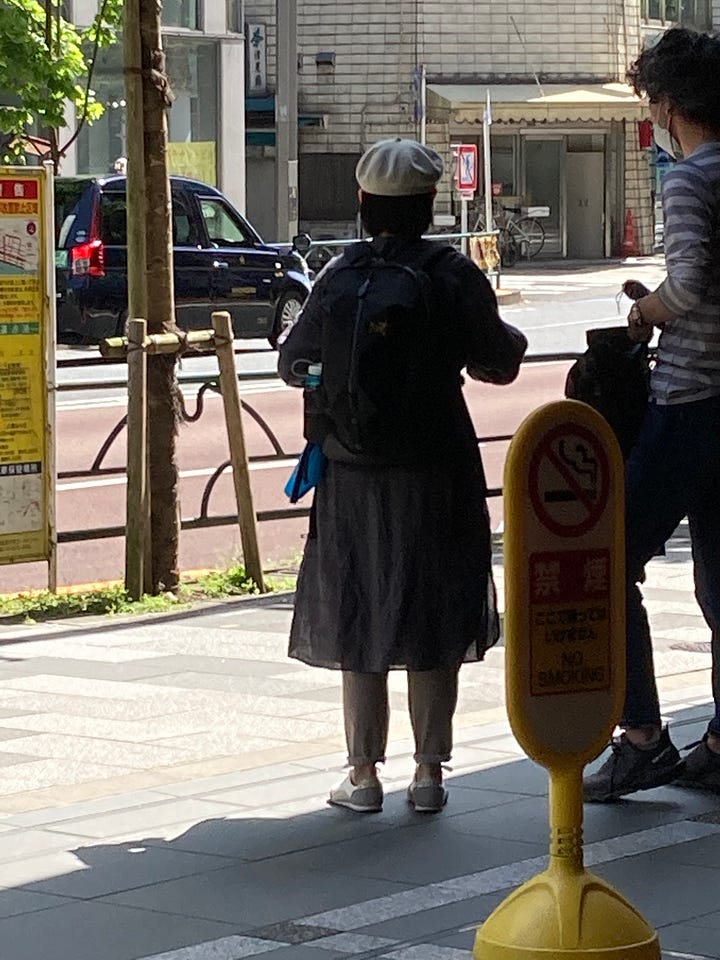
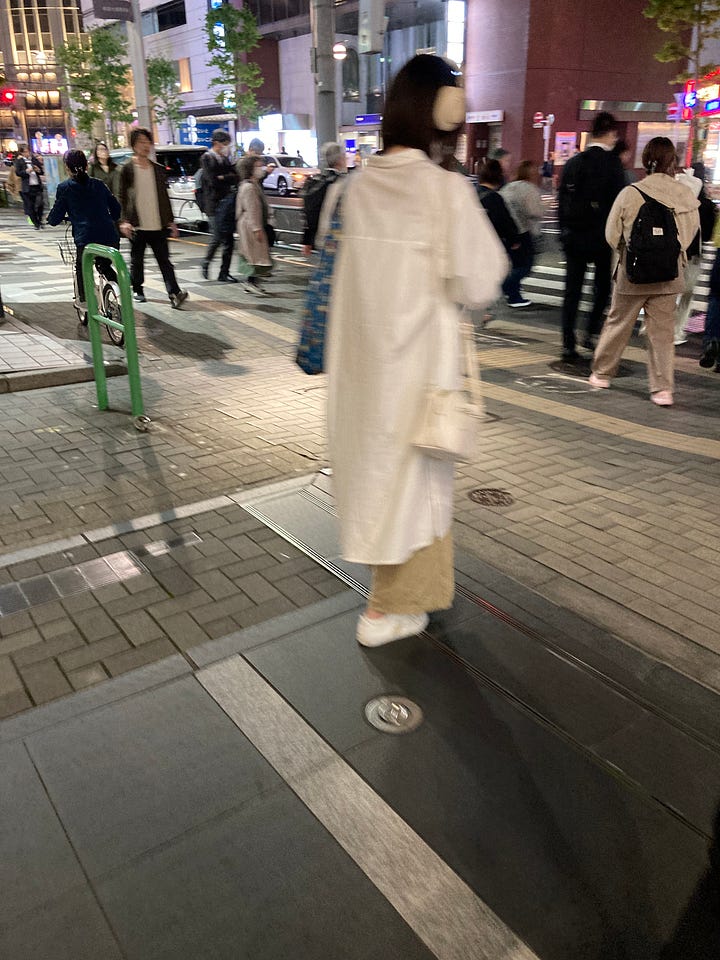
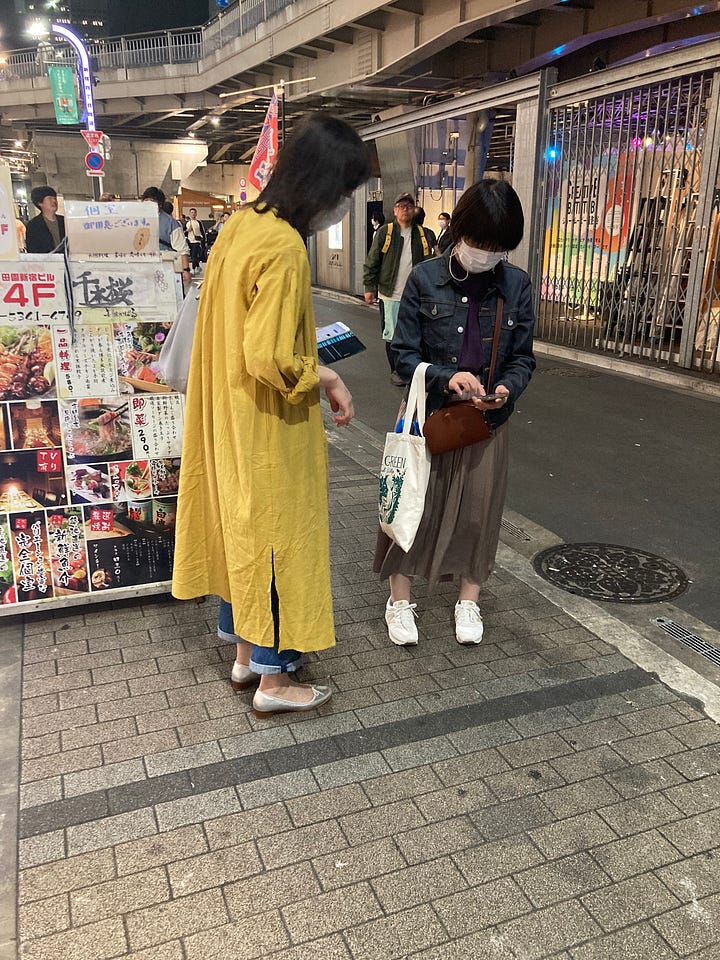
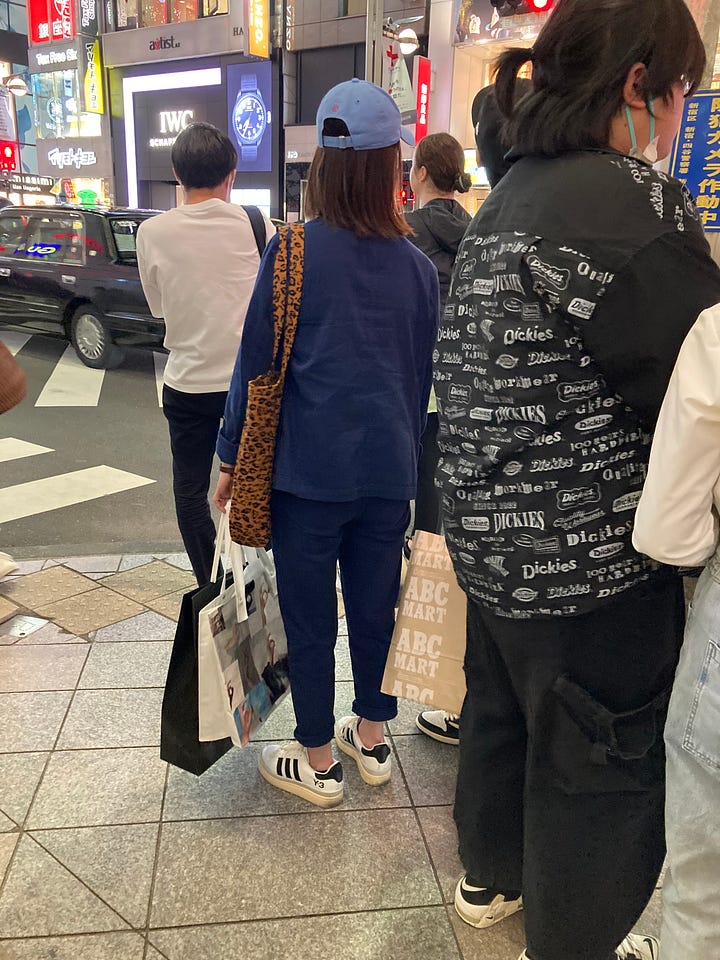
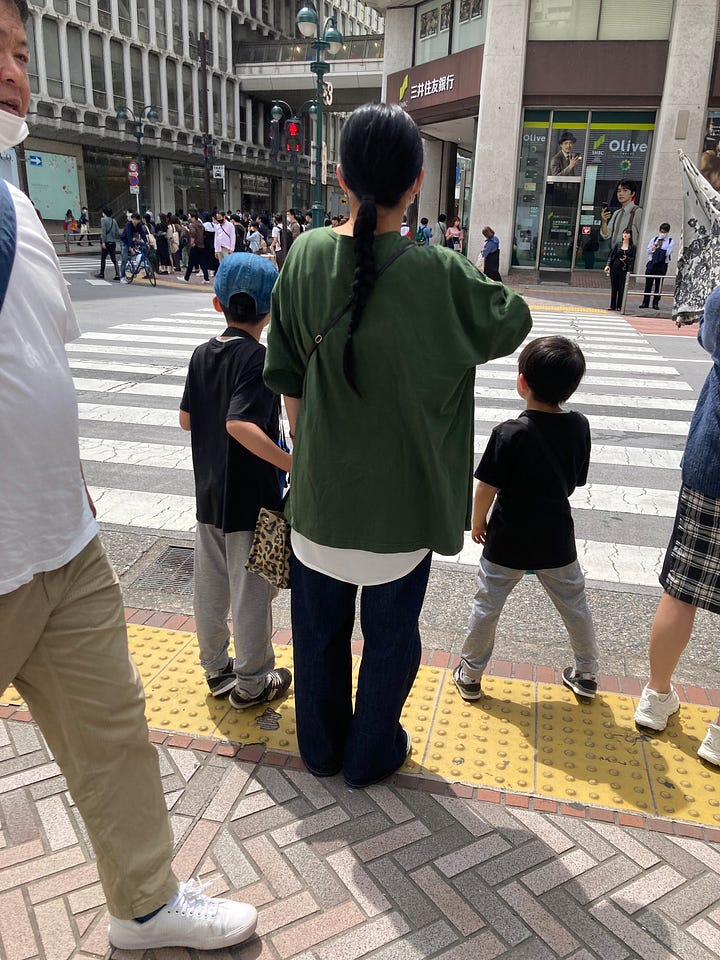
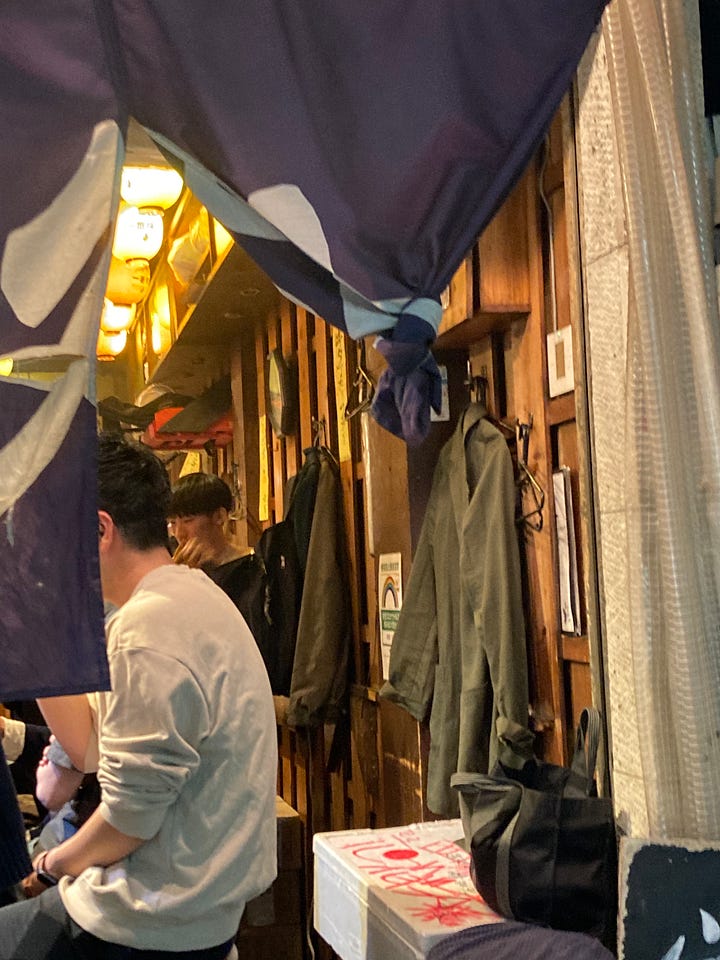
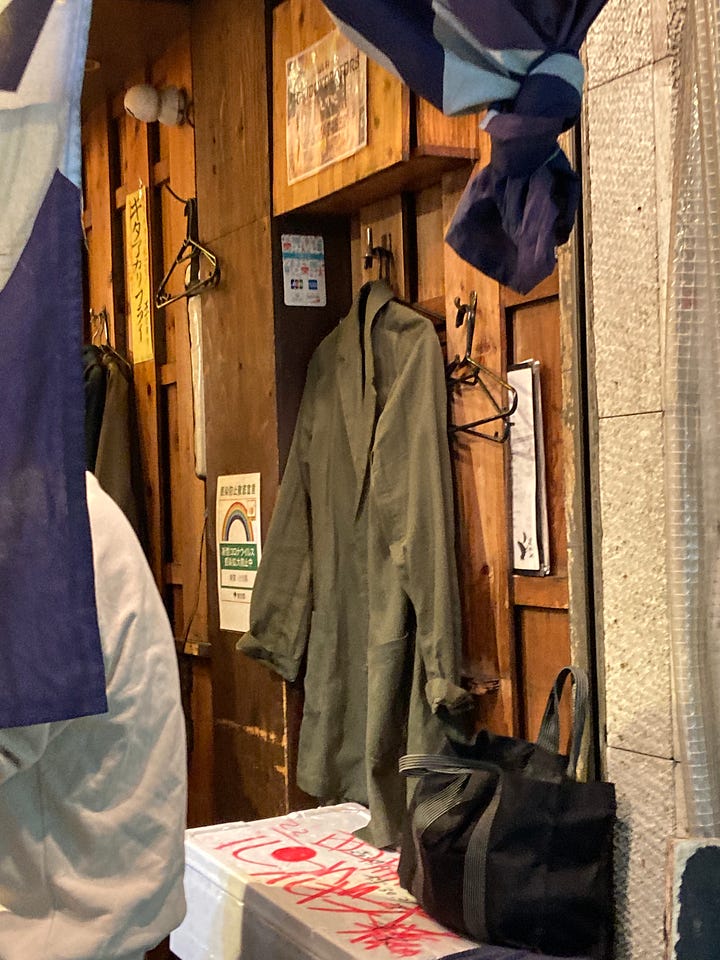

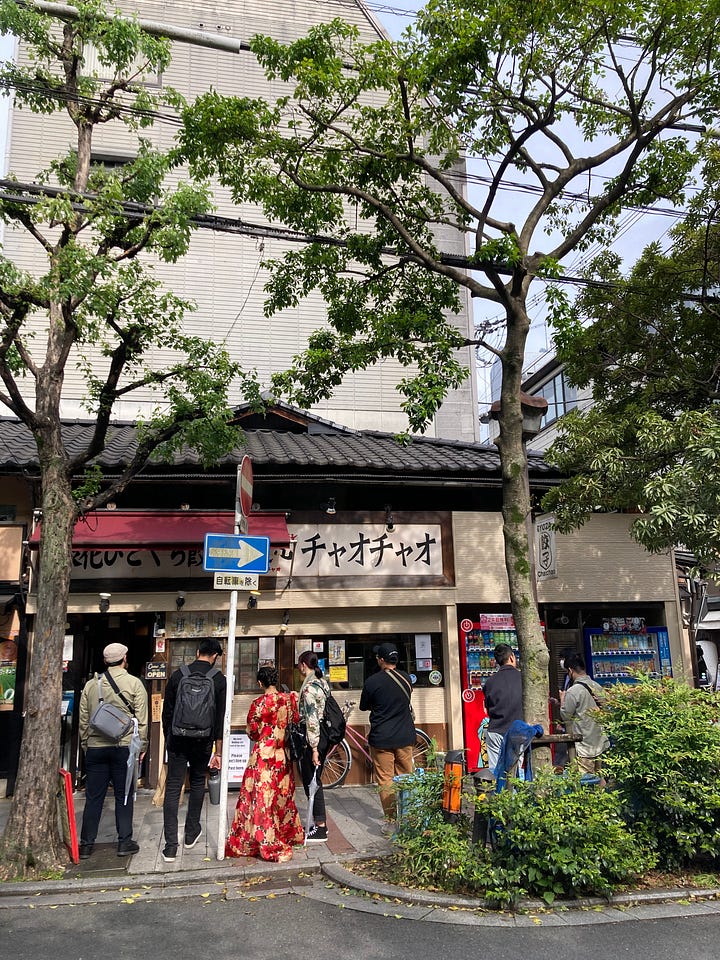
There is a fine line between cool and sloppy, with the oversized clothes. It’s hard for me to find that line and have nuance when discussing it. A lifetime of hearing the words “I dont like my flabby <insert body part> and need to coverup” informed my take on this silhouette. Slouchy cardigans & polyester floral print ponchos might forever look sloppy to my eyes. Other associations I have heard and may have internalized :
If you are out of shape, cover it up with clever tricks.
Too oversized pants look like pajamas worn in public.
Pleats add volume at the waist. Unless you have a flat stomach and are able to iron your pleats to sit well, you don’t want volume added at the waist.
Fitted on top and bottom is trying too hard. If one is streamlined to the body, make the other relaxed. ( Boyfriend shirts + skinny jeans. Slim fit t-shirt + wide leg trousers. )
Structured fabric is better for oversized clothing.
Volume on top vs volume at the bottom should be chosen by body type.
Volume at the bust :NO. Volume at the hips : NO. Volume at the thighs : YES.
There has to be some narrow-ness/show-of-dainty-ness in the outfit. At the waist. Or at the ankle. Or at the wrist. Or at the collarbone. Or at the nape of the neck.
Most clothes look good on a toned body of any shape and size.
Find style inspiration on women of your body type.
…
I haven’t gained a new perspective on silouettes in clothing in general, for a long time. Everytime my body shape changes, I alter my proportions a little and continue to do more of the same. Japanese street style is understandably challenging me in confusing ways. Petite woman with no curves seem to wear giant tunics and very-very-wide leg trousers paired together. I cant figure out why this silhouette works. Why isn’t it sloppy ? ( Shallow answer : natural fabrics with some inherent structure, instead of polyester that looks cheap. Strength in numbers, so that the average volume of garments on a person in any given frame, is normalized to the location. But there has to be more to this story. ) Why isnt this shape swallowing up the woman and overwhelming her frame ?
‘Origami’. ‘Origami’. …Trousers looked sculpted with every pleat having a specific purpose making a certain shape. ‘Origami’ , I kept thinking. How did this women know that this fit works on her ? Why did she choose this size over the next size ? Would she have accepted 10% less/more volume ? What is too oversized, in the category of oversize ? Trousers and overcoats, got all of my gaze on the streets in Japan. The street style as I perceived it, blew a hole right through my theory of right proportions for each body type. The women who seem to do the oversize silhouette well, were not an exception among women with a job curating at an art gallery, but the average women in the population.
There are other holes in my way of thinking that need to be addressed. For instance, minimalism garners respect when its done by humans who have the means to buy things, and choose not to. I many not see folks who live with less due to poverty and think of minimalism. To see women who aren’t necessarily uncomfortable with their body shape, wear oversized clothing, felt aspirational. Being back in an American grocery store and seeing an oversized cardigan over sweatpants and baggy t-shirt, ceased to be aspirational.
All in all, new ways to think about clothing emerged :
Should clothes fit the body? Or should clothes making interesting shapes on top of the body?
“flattering shape” or “making an art form” ?
Is the body merely a base ingredient in the outfit ? Or are clothes in service of a bodily shape-ideal ?



